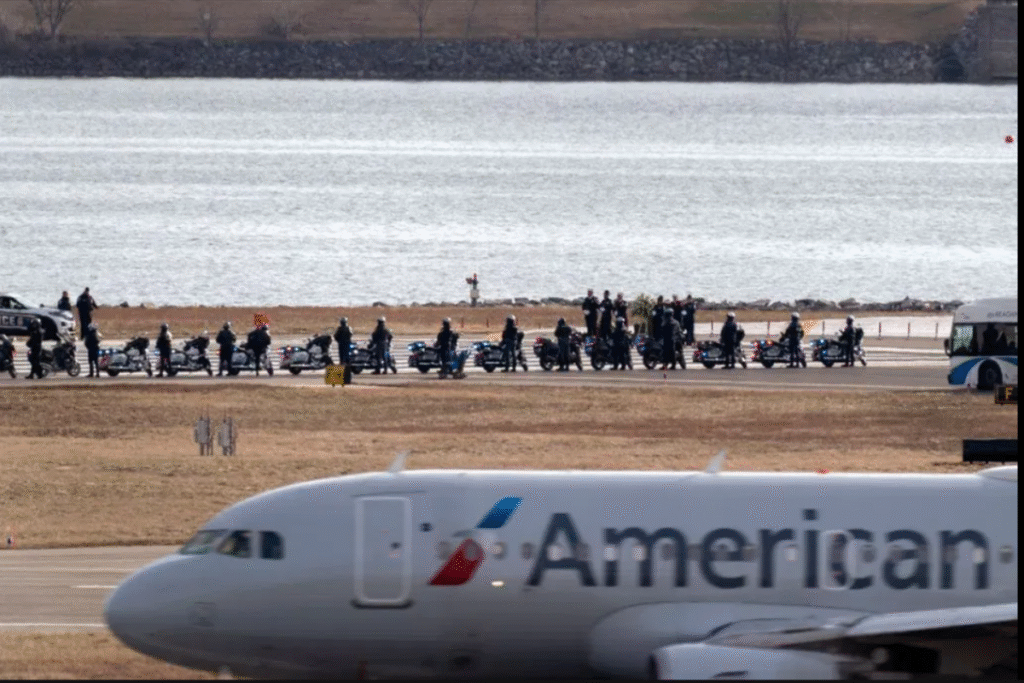On January 29, 2025, a catastrophic mid-air collision between American Airlines Flight 5342 and a U.S. Army Black Hawk helicopter near Washington, D.C., killed all 67 people aboard both aircraft. This tragedy has exposed critical vulnerabilities in aviation safety protocols, including pilot communication failures, altitude deviations, and the hidden risks of night vision technology.
Collision Overview: Timeline of Events
At 9:14 PM EST, American Airlines Flight 5342 – a CRJ700 regional jet carrying 60 passengers and four crew members – was on final approach to Reagan National Airport when it collided with a Black Hawk helicopter conducting a low-altitude training mission. Both aircraft crashed into the Potomac River, with recovery teams facing near-freezing temperatures and strong currents during search operations. The National Transportation Safety Board (NTSB) launched an immediate investigation, revealing a chain of preventable errors.
Critical Factor 1: Pilot Error & Communication Failures
Investigators identified multiple human factors contributing to the disaster:
- Missed ATC Instruction: Air traffic control (ATC) directed the Black Hawk to “pass behind” the jet 17 seconds before impact, but this warning was partially blocked by the helicopter’s own radio transmission.
- Visual Separation Request: The helicopter pilot had requested “visual separation” from ATC, allowing closer proximity to the jet than standard rules permit – a decision now under scrutiny.
- Cockpit Confusion: Voice recorder transcripts reveal conflicting altitude reports between the Black Hawk’s pilot (claiming 300 feet) and instructor (reporting 400 feet) moments before impact.

Critical Factor 2: Black Hawk Altitude Violations
Flight data exposes alarming altitude deviations:
- Corridor Restrictions: The helicopter was required to stay below 200 feet in its designated Potomac River corridor but flew between 278-400 feet at impact.
- Instrument Discrepancies: The Black Hawk’s flight data recorder showed invalid pressure altitude readings, while its radar altimeter reported 313 feet – directly conflicting with crew accounts.
- ATC Challenges: Reagan National’s understaffed tower had one controller managing both helicopter routes and runway operations, violating standard protocol.
Critical Factor 3: Night Vision Goggle Limitations
The Black Hawk crew’s reliance on night vision technology introduced unexpected risks:
- Tunnel Vision Effect: NVGs provide just a 40-degree field of view compared to natural 180-degree peripheral vision, potentially obscuring the approaching jet.
- Depth Perception Errors: Urban light pollution and the CRJ700’s anti-collision lights could have distorted the crew’s depth perception through NVGs.
- Workload Spike: NTSB simulations show NVGs require 15-20% more cognitive effort during critical maneuvers, delaying hazard response times.
National Impact & Ongoing Reforms
The collision has triggered sweeping aviation safety reviews:
- Staffing Shortfalls: With 3,000+ controller vacancies nationwide, the FAA announced plans to “supercharge” hiring through increased salaries ($89,000 starting) and accelerated training.
- Technology Upgrades: Congress fast-tracked funding for updated radar systems and AI-assisted collision avoidance tools at busy airports.
- Military-Civilian Coordination: New protocols now require real-time data sharing between military aircraft and civilian ATC systems in shared airspace.
Lessons for Aviation Professionals
Key takeaways from the ongoing investigation:
- Altitude Discipline: Implement redundant altitude verification systems for low-level operations.
- NVG Training: Conduct urban environment simulations addressing light pollution and traffic density challenges.
- Communication Protocols: Mandate read-backs for all ATC instructions in congested airspace.
Also Read – https://scoopusa24.com/us-citizen-deported-honduras-family-legal-issues/

Pingback: Clearwater Ferry Crash Near Memorial Causeway Bridge: 1 Dead, Multiple Injured in Clearwater Beach Boat Accident